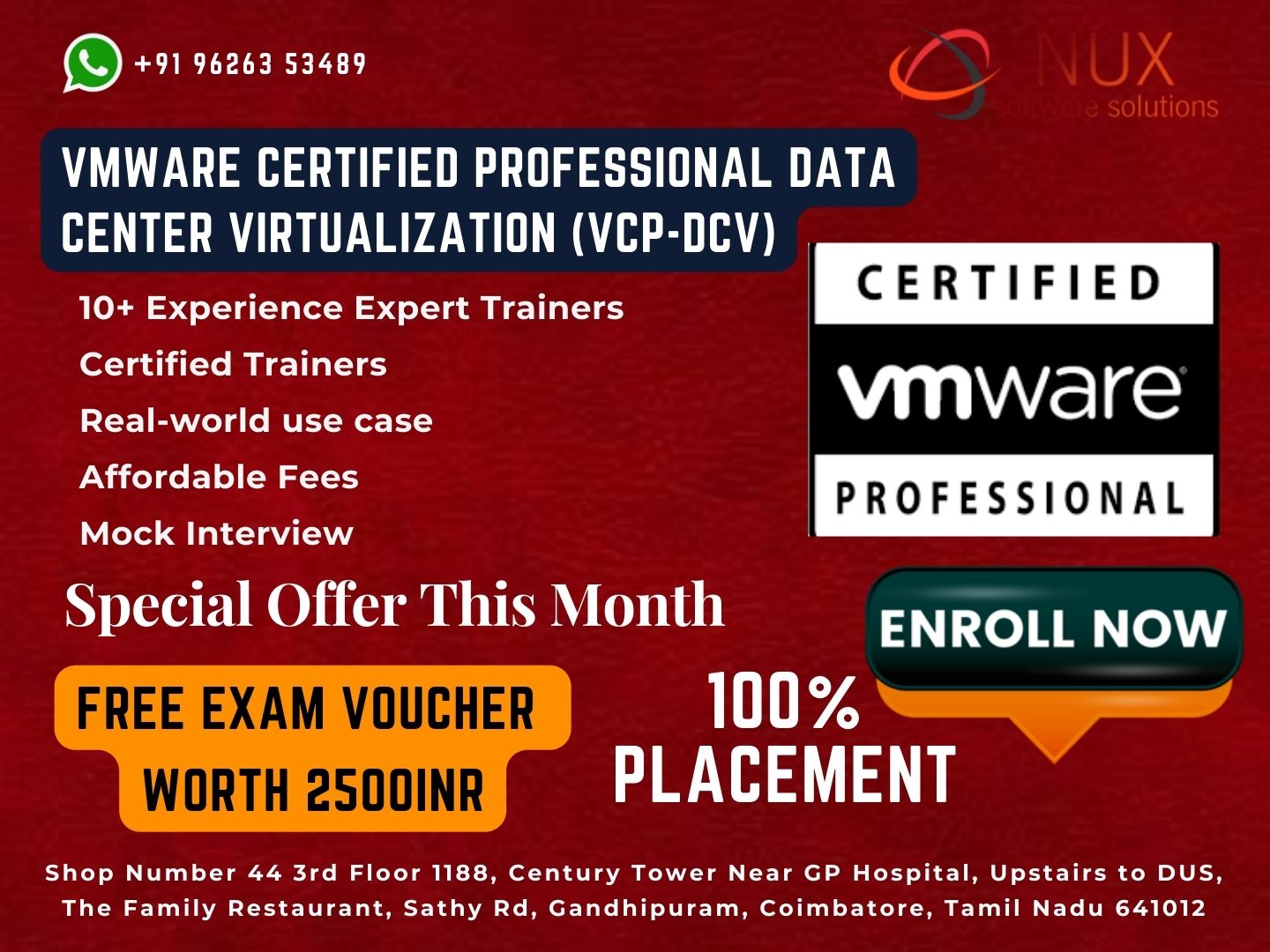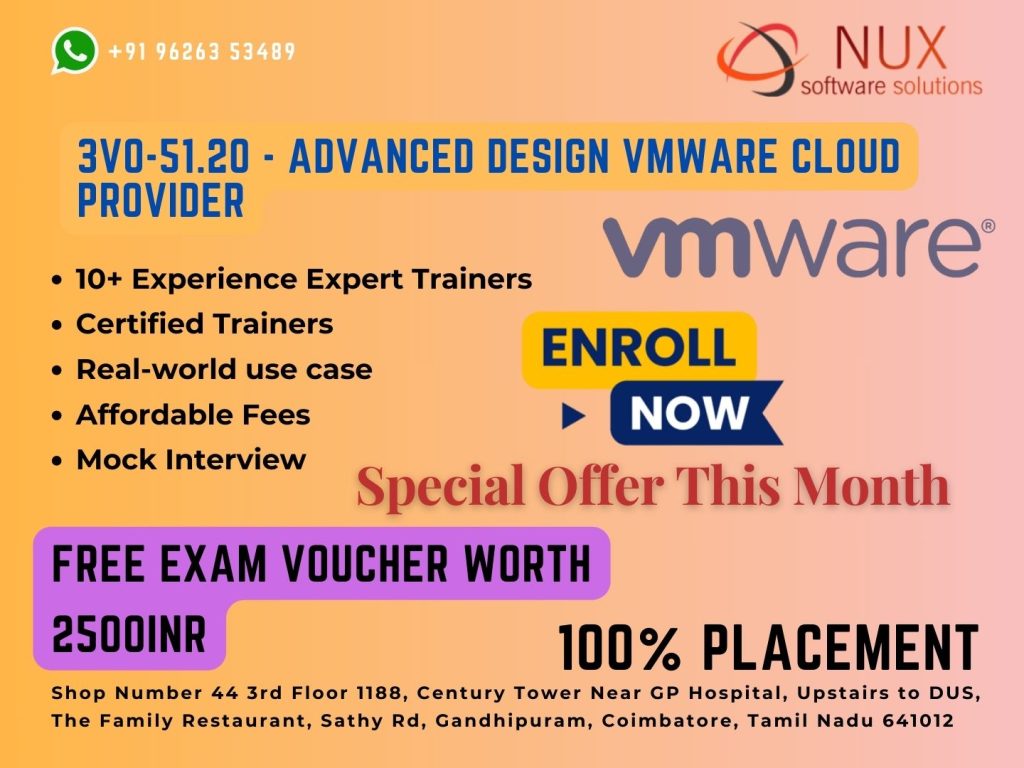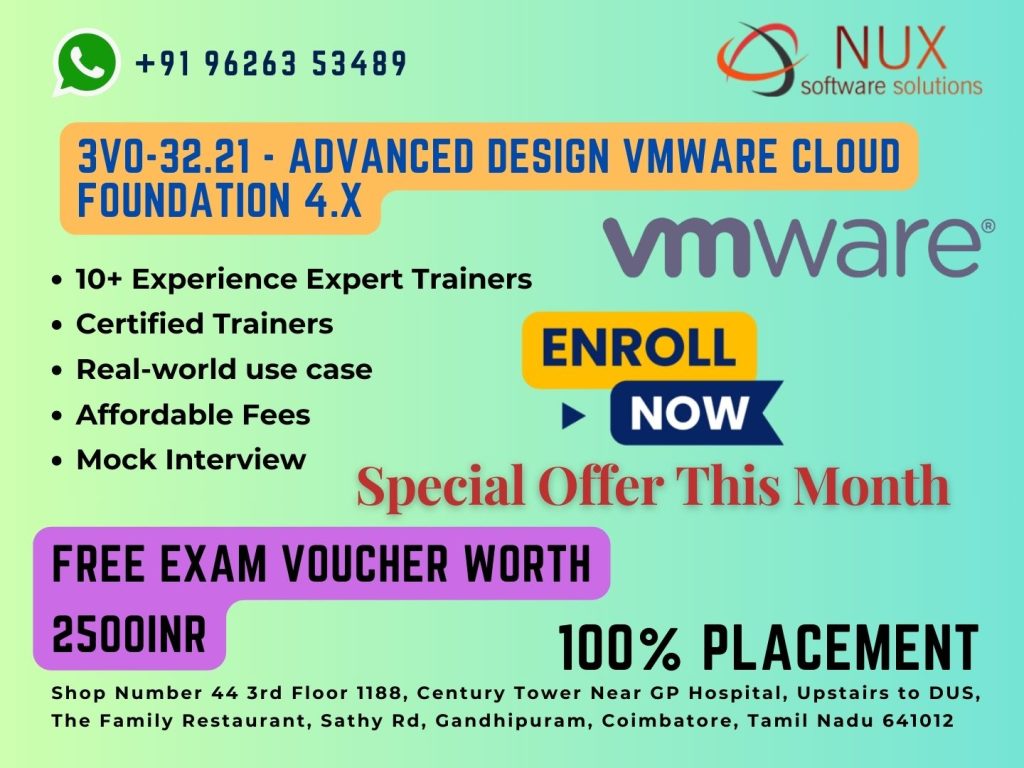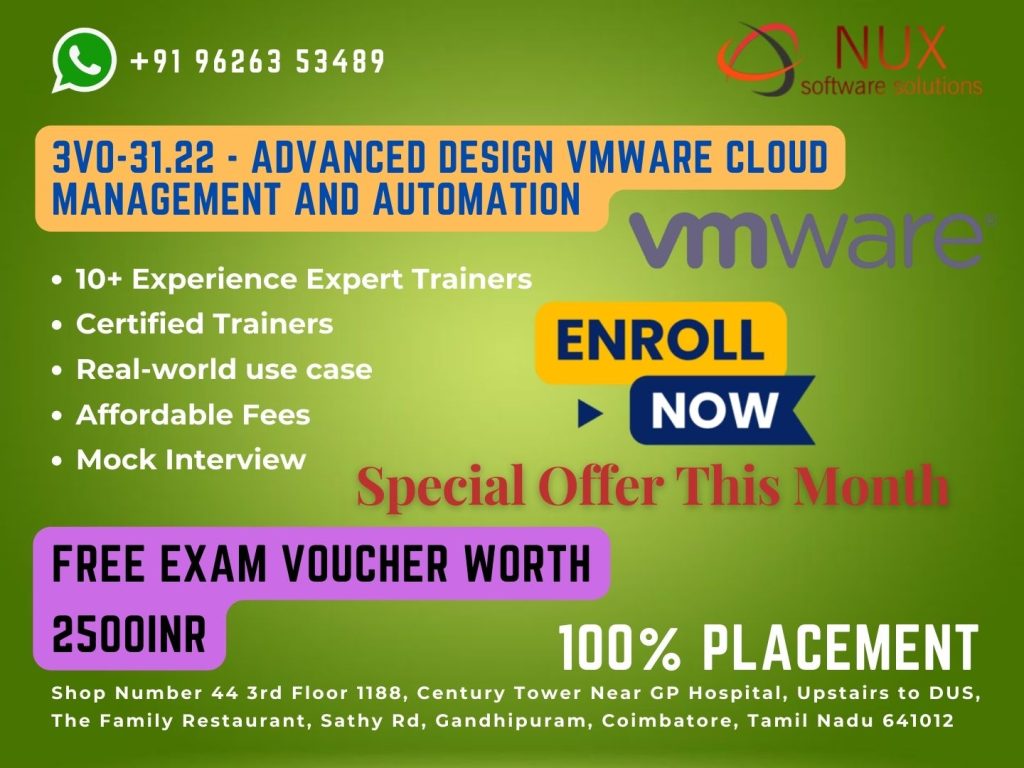VMware Certified Professional Data Center Virtualization (VCP-DCV) Training and Certification

Course Overview
The VCP-DCV (VMware Certified Professional – Data Center Virtualization) training program provides IT professionals with the skills required to deploy, manage, and scale virtualized environments using VMware vSphere. This is the most in-demand VMware certification globally and is a foundational requirement for roles involving server virtualization, data center consolidation, and hybrid cloud deployment.
This hands-on course covers the full vSphere stack including ESXi, vCenter Server, virtual machines, virtual networks, storage integration, cluster management, high availability, and resource optimization. By the end of the program, participants will be prepared to clear the VCP-DCV certification exam and confidently manage enterprise-level virtualization platforms.
Why Choose This Course
Learn directly from certified VMware instructors with hands-on lab experience
Master the deployment and administration of vSphere environments
Gain real-world skills in resource management, performance tuning, and fault tolerance
Meet the core requirement for VMware’s most recognized certification path
Boost your career with a globally respected credential in data center virtualization
Who Should Enroll
IT infrastructure and system administrators
Data center engineers and virtualization specialists
Technical consultants and solution architects
Cloud engineers and platform operations professionals
IT professionals aiming to earn VCP-DCV certification
Skills You Will Gain
Installation and configuration of VMware ESXi hosts and vCenter Server
Creating and managing virtual machines, templates, snapshots, and VM hardware
Configuring virtual networking (vSS/vDS) and VMFS/NFS storage systems
Setting up vSphere High Availability (HA), vMotion, Storage vMotion, and DRS
Securing environments using roles, permissions, and vSphere encryption
Performing upgrades, patching, and backup/restore operations
Monitoring performance and troubleshooting with vSphere client and logs
Career Opportunities
VMware vSphere Administrator
Virtualization Engineer / Consultant
Data Center Operations Specialist
Systems Engineer – Infrastructure
Cloud Platform Engineer
VCP-DCV is highly sought after across industries such as IT services, telecom, banking, healthcare, defense, and cloud infrastructure providers.
Advance Your Career with VMware’s Flagship Certification
Whether you’re building your virtualization foundation or pursuing a leadership path in IT infrastructure, the VCP-DCV certification validates your expertise and opens new opportunities in high-demand roles.
Enroll in VMware VCP-DCV Training at Linux Training Center, Coimbatore
VMware Certified Professional Data Center Virtualization (VCP-DCV) Syllabus
Modules
Architectures and Technologies
- Identify the pre-requisites and components for a vSphere implementation
- Describe vCenter Server topology
- Identify and differentiate storage access protocols for vSphere (NFS, iSCSI, SAN, etc.)
- Describe storage datastore types for vSphere
- Explain the importance of advanced storage configuration (vSphere Storage APIs for Storage Awareness (VASA), vSphere Storage APIs Array Integration (VAAI), etc.)
- Describe storage policies
- Describe basic storage concepts in K8s, vSAN and vSphere Virtual Volumes (vVols)
- Describe instant clone architecture and use cases
- Describe ESXi cluster concepts
- Describe Distributed Resource Scheduler (DRS)
- Describe vSphere Enhanced vMotion Compatibility (EVC)
- Describe how Distributed Resource Scheduler (DRS) scores virtual machines
- Describe vSphere High Availability
- Describe datastore clusters
- Describe VMkernel networking
- Manage networking on multiple hosts with vSphere distributed switch
- Describe networking policies
- Manage Network I/O Control (NIOC) on a vSphere distributed switch
- Describe the basics of vSAN as primary storage
- Identify basic vSAN requirements(networking, disk count + type)
- Explain Software Guard Extensions (SGX)
VMware Products and Solutions
- Describe the role of vSphere in the software-defined data center (SDDC)
- Identify use cases for vCloud Foundation
- Identify migration options
- Identify DR use cases
- Describe vSphere integration with VMware Skyline
Planning and Designing
Installing, Configuring, and Setup
- Describe single sign-on (SSO) deployment topology
- Configure a single sign-on (SSO) domain
- Join an existing single sign-on (SSO) domain
- Set up identity sources
- Configure Identity Federation
- Configure Lightweight Directory Access Protocol (LDAP) integration
- Configure Active Directory integration
- Create and configure VMware High Availability and advanced options (Admission Control, Proactive High Availability, etc.)
- Deploy and configure vCenter Server High Availability
- Set up content library
- Configure vCenter Server file-based backup
- Analyze basic log output from vSphere products
- Configure vSphere Trust Authority
- Configure vSphere certificates
- Describe Enterprise PKIs role for SSL certificates
- Securely Boot ESXi hosts
- Configure different network stacks
- Configure Host Profiles
- Identify boot options
- Configure Quick Boot
Performance-tuning, Optimization, Upgrades
- Identify resource pools use cases
- Explain shares, limits and reservations (resource management)
- Identify and use tools for performance monitoring
- Configure Network I/O Control (NIOC)
- Configure Storage I/O Control (SIOC)
- Explain the performance impact of maintaining virtual machine snapshots
- Plan for upgrading various vSphere components
Troubleshooting and Repairing
Administrative and Operational Tasks
- Create and manage virtual machine snapshots
- Create virtual machines using different methods (Open Virtual Machine Format (OVF) templates, content library, etc.)
- Manage virtual machines
- Manage storage (datastores, storage policies, etc.)
- Configure and modify datastores (expand/upgrade existing datastore, etc.)
- Create virtual machine storage policies
- Configure storage cluster options
- Configure and perform different types of migrations
- Configure role-based user management
- Configure and manage the options for securing a vSphere environment (certificates, virtual machine encryption, virtual Trusted Platform Module, lock-down mode, virtualization-based security, etc.)
- Configure and manage host profiles
- Utilize baselines to perform updates and upgrades
- Utilize vSphere Lifecycle Manager
- Describe Firmware upgrades for ESXi
- Describe ESXi updates
- Describe component and driver updates for ESXi
- Describe hardware compatibility check
- Describe ESXi cluster image export functionality



